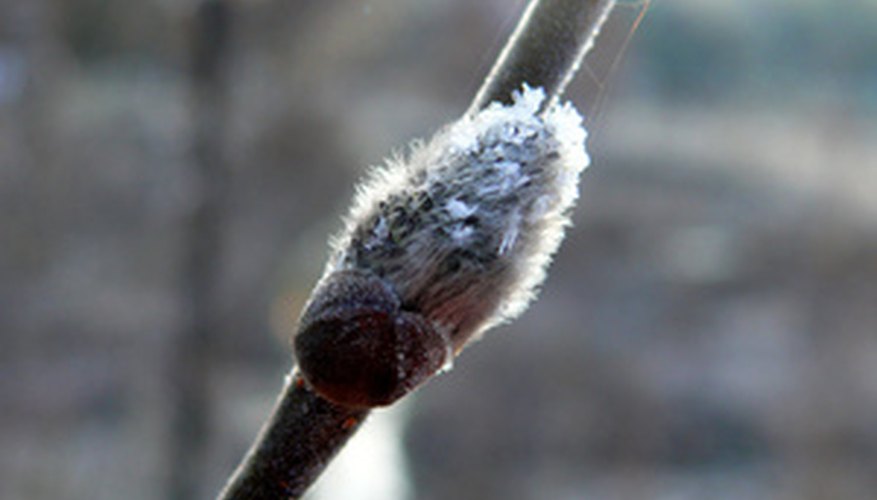Salix caprea 'Pendula', also known as the dwarf pussy willow, is a tree people use for landscaping because of the fluffy white balls that the tree displays. The dwarf pussy willow is hardy against a variety of pests such as insects and deer, but is susceptible to leaf spot and plant rust.
Appearance
Leaf spot is most commonly seen as tan, brown or black spots on the leaves. The size and frequency of the spots depend on how advanced the leaf spot is in its growing cycle. As the disease progresses, the spots will grow together to form large spots. Rust starts as brown rust-coloured spots on the bottom of the leaves of the trees and progresses to form nodules. Rust tends to be plant specific, so if it is on the dwarf pussy willow, it will likely not spread to other trees and plants.
- Leaf spot is most commonly seen as tan, brown or black spots on the leaves.
Causes
Leaf spot and rust on dwarf pussy willows are caused by a variety of fungi and bacteria that live and grow on the trees. The tree becomes infested as the fungi release spores and they spread to other parts of the tree. Leaf spot is primarily an aesthetic problem and will not kill the tree, but rust can be deadly to the plant if not taken care of at the first signs of infestation.
Treatment
The most common treatment for leaf spot and rust on dwarf pussy willows is regular spraying with fungicides, but this may not always take care of the problem. Leaf spot is difficult to control even with the fungicides and may require additional steps. Remove the affected leaves as soon as you see them; this may help limit the spread of the disease. Leaf spot and rust are easily spread, so make sure you do a thorough check of the leaves, as one missed leaf can spread the diseases to other parts of the tree.
- The most common treatment for leaf spot and rust on dwarf pussy willows is regular spraying with fungicides, but this may not always take care of the problem.
- Leaf spot and rust are easily spread, so make sure you do a thorough check of the leaves, as one missed leaf can spread the diseases to other parts of the tree.
Considerations
Given the relatively small size of the dwarf pussy willow, you may want consider replacing the plant instead of starting a long-term treatment for leaf spot and rust. If the tree is substantially infected when you discover the disease, or if the cost of a constant fungicide regimen as well as the constant vigilance for new infected leaves is too time-consuming, then total replacement may be the best option.
Misconceptions
There are no diseases specific to dwarf pussy willow trees as you might see with elms or other trees. Leaf spot and rust are common diseases that affect many different types of trees. The main difference is that the fungus or bacteria that cause the diseases may be attracted to a specific type of tree such as the dwarf pussy willow. So while only dwarf pussy willows may be the only infected trees on your property, the disease is actually common to many trees.
- There are no diseases specific to dwarf pussy willow trees as you might see with elms or other trees.
- The main difference is that the fungus or bacteria that cause the diseases may be attracted to a specific type of tree such as the dwarf pussy willow.
